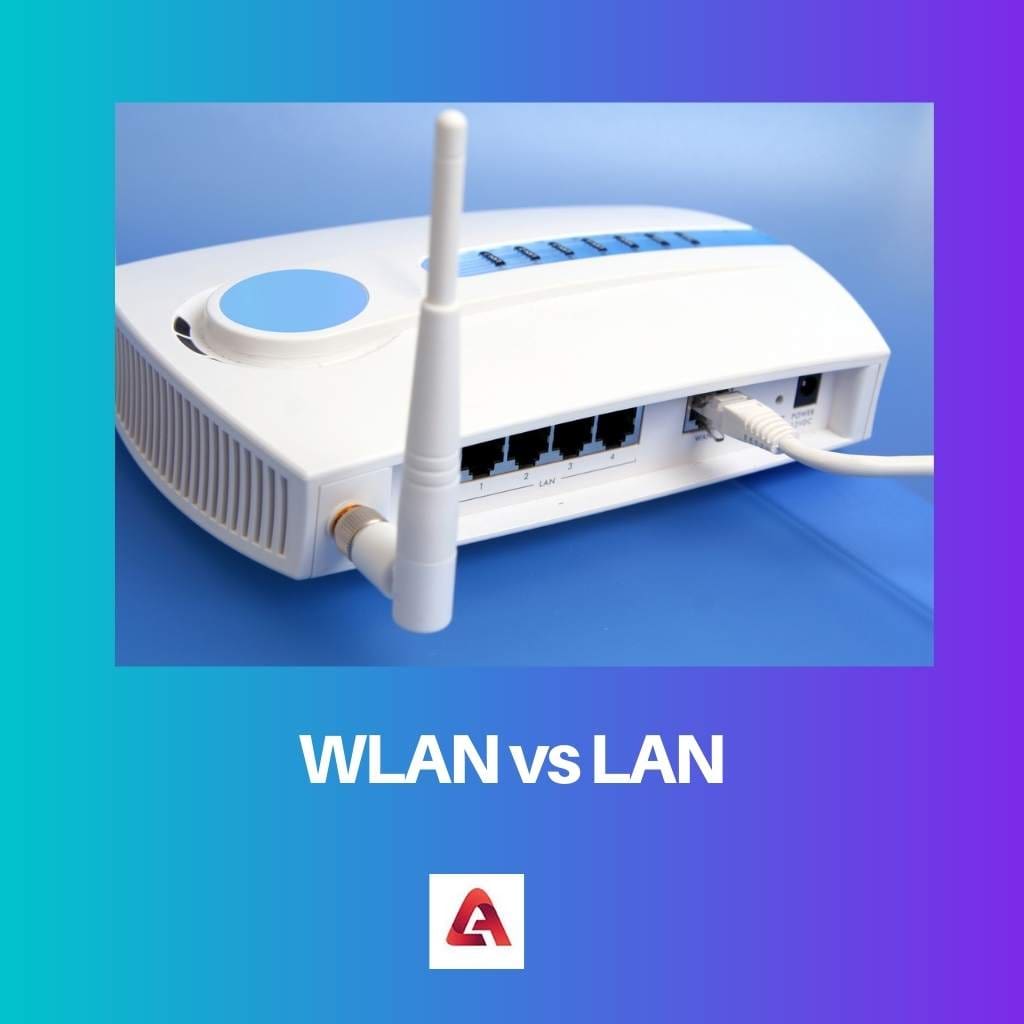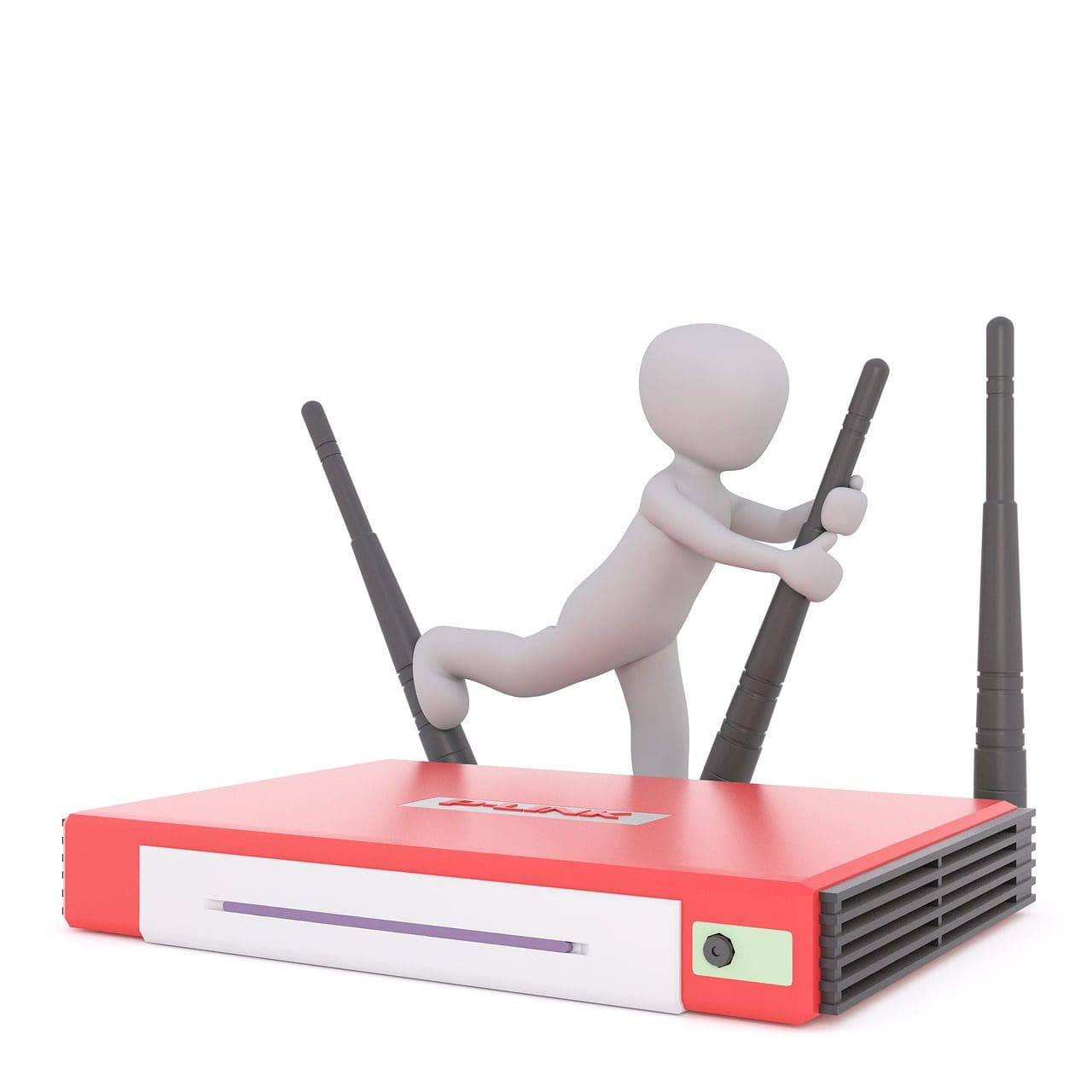The traffic on the internet is increasing day by day. Internet providers are always looking for new, advanced, faster, secure, and easy-to-access options for their customers so that their experience is fruitful with the services.
Every device has a different structure and composition, equipped with various technologies. The gadgets include laptops, tablets, mobile phones, smartwatches, etc.
The two of the most common networks used nowadays are LAN (Local Area Network) and WLAN (Wireless Local Area Network).
Key Takeaways
- WLAN stands for wireless local area network and uses radio waves to connect devices, while LAN stands for local area network and uses cables or wires.
- WLAN provides mobility and flexibility as devices can connect wirelessly, while LAN provides faster and more reliable data transfer speeds.
- WLAN is more suitable for home and small office networks, while LAN is more suitable for larger networks like enterprises or organizations.
WLAN vs LAN
WLAN stands for Wireless Local Area Network, a type of wireless network that allows devices to communicate without the need for wires or cables. LAN stands for Local Area Network, a computer network connecting devices in a limited geographic area like a building or campus.

WLAN stands for Wireless Local Area Network. This network type enables the transfer of data with the help of wireless transmitters and receivers. This does not use the typical data transfer done using the cables.
WLANs are used in areas that require a large number of devices to connect to the internet at the same time.
LAN stands for Local Area Network. It can be described as a collection of network devices in a specific location, and all of them are connected via switches or routers, which helps in the transmission of data. Each network device uses a cable to connect itself to the switch or router.
Comparison Table
| Parameters of Comparison | WLAN | LAN |
|---|---|---|
| Stands for | Wireless Local Area Network | Local Area Network |
| Connection type | Wireless technologies | Includes both wired and wireless technologies. |
| Cost and security | Expensive to install and are less secure. | Less expensive and more secure. |
| Coverage | Large regions such as offices, buildings, stations, etc. | Large areas such as buildings. |
| Performance | High performance; performance affected by bad weather. | Good performance and it isn’t affected by the weather. |
| Interference | It can be interfered with easily. | It cannot be interfered with easily. |
| Examples | Desktops, laptops, tablets, and mobiles connected on Wi-Fi or hotspots networks. | Desktop and laptop connected to LAN in a building or an office. |
What is WLAN?
WLAN stands for “wireless local area network.” Many gadgets come pre-installed with Wi-Fi, where the users can connect to the internet wirelessly when in the range of a router.
WLAN connections require both an infrastructure mode and an access point. They can be concurrently used by any device and all the devices when in the range of the router.
WLANs with signal interruptions have decreased speed and link frequency. The installation of WLANs is costly, but it is relatively easy to use. Nowadays, all devices are Wi-Fi-ready, so the hardware system is all you need to establish the connection.
WLAN is used in areas where a large no of devices have to be connected to network providers for the internet, but not necessarily at the same time. WLAN is also used at home to connect laptops and mobile phones.
WLAN has better performance and rarely encounters interference if properly mounted. However, the distance between the device using the internet and the router directly impacts the connection’s speed and power.
WLAN provides better protection and is one of the major advantages of this system. The network system is more stable as it has a built-in firewall that allows better protection of the network from any link instability that can be caused by interference.

What is LAN?
LAN internet connection makes use of Ethernet cables and adapters (mostly used in laptops and desktops). A hub or router is also required apart from these elements. The broadband routers help in establishing the internet connection making the process simple and giving good performance results.
The establishment of a LAN requires a central connection, a router and a network of cables to connect to all the computers. Many of the computers in the network are linked by switches.
The switches and routers are installed using the network settings. LAN is installed in locations where a large number of computers have to be connected to the internet simultaneously, such as in offices or other buildings.
The network is wired, and a standard internet protocol is set for the proper operation of the network. The laptops have an in-built LAN port, so one only needs to set up a LAN connection on the laptop to access a service provider.
LAN services have reasonable prices, which everyone can afford, making it a cost-effective and convenient way to connect to the internet.

Main Differences Between WLAN and LAN
- WLAN is a wireless network, while LAN is a wired network.
- WLAN is used in places where internet devices are movable, while LAN is preferred in areas where devices are not easy to move, such as in cases of desktops.
- WLAN is more convenient for the users as it provides many befits than LAN.
- WLAN is much more secure and faster than LAN.
- WLAN gives a speed of 53mbps, while LAN gives an internet speed of up to 100mbps.
- WLAN, when in a gigabit network, gives an internet speed of 1000mbps, while the LAN in such a network can give a speed of up to 1Gbps.
- WLAN is suited for the transfer of small files, while LAN has an advantage in the transfer of large files due to its speed.


The writer has done an excellent job of explaining the technical aspects of WLAN and LAN. This detailed description is very helpful for anyone looking to expand their knowledge about network types.
I’m impressed by the depth and clarity offered in this article. It’s a valuable resource for those wanting to delve into networking topics.
Definitely. The article manages to convey complex technical concepts in a simplified manner for a broader audience.
The article effectively captures the essence of WLAN and LAN, breaking down the technicalities into easily digestible elements. A must-read for tech enthusiasts.
Certainly, the article simplifies the intricacies of WLAN and LAN, making it accessible to a wider audience.
This article provides a comprehensive understanding of WLAN and LAN and their respective applications. The clarity in the descriptions is highly commendable.
I couldn’t agree more. The clarity offered in the article truly enhances the understanding of these network types.
While the comparison between WLAN and LAN is well-presented, the article could delve a bit further into some nuanced differences and practical applications of these network types.
I understand your point of view, but I think the article serves as an excellent primer for understanding WLAN and LAN.
The article succinctly summarizes the key differences between WLAN and LAN, making it convenient for readers to understand the distinction.
The article presents a comprehensive analysis of WLAN and LAN. The comparison table is particularly useful for those looking to understand their differences and use cases.
Absolutely, the clear distinction between WLAN and LAN has been effectively communicated in the article.
The article provides an insightful and educational comparison of WLAN and LAN. The comprehensive details aid in better understanding these network types.
The article has provided a very insightful comparison of WLAN and LAN. It’s clear and easy to understand for anyone interested in networking concepts.
I agree. It’s definitely a helpful synthesis of the differences and uses of WLAN and LAN.
The article has a very academic tone and is quite exhaustive in its coverage of WLAN and LAN. It’s a commendable piece for those interested in in-depth tech discussions.
Agreed. The academic tone and comprehensive treatment of the subject matter provide a solid understanding of WLAN and LAN.
The intellectual rigor of this piece is certainly notable. It elevates the discourse around networking technologies.
This article does a commendable job of elucidating WLAN and LAN. The real-world examples provided are particularly enlightening.
I concur. It’s great to see the practical application of WLAN and LAN being discussed in such detail.
Absolutely, the inclusion of real-world use cases makes the article exceptionally informative.